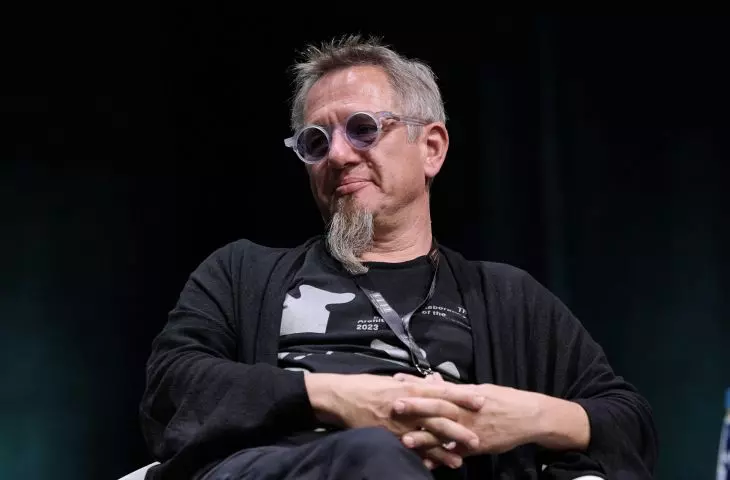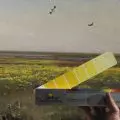The 2nd Distributed Energy Congress is not only about lectures and panel discussions. The event, which will take place at the end of next month in Krakow, Poland, will include an interdisciplinary Architecture Hackathon "Culture Futura e-POLIS - the city of the future."
The 2nd Distributed Energy Congress, to be held in Krakow on October 28-30 this year, will bring together people involved in the issues of local energy sources, energy storage and environmental and social issues related to the use of RES, including in architecture. The congress will offer participants expert panels, plenary and thematic sessions or a literary and coworking zone. But that's not all, as the Congress will also include an Architecture Hackathon under the title "Culture Futura e-POLIS - the city of the future". We talk about the role of distributed energy sources in architecture, the interdisciplinary approach to its design and the Hackathon itself with the organizer of the event, Aleksandr Janicki.
Architecture Hackathon "Culture Futura e-POLIS - the city of the future".
© made available through the kindness of the organizers
Przemyslaw Ciępka: During the second Distributed Energy Congress in Krakow, an architectural Hackathon will be held under the title "Culture Futura e-POLIS - the city of the future". What is the theme of the event and what will it consist of?
Aleksander Janicki: In line with the congress' slogan, which reads "Local energies for the future ," in the two-day Hackathon we focus on the creative process , which is to be about design, focused on optimizing the use of energy already at the stage of creating initial architectural concepts. It will concern specific objects performing certain framework functions and located in specific locations. This includes, for example, a single-family house, a townhouse in the city center or a hospital on the outskirts. The activities carried out as part of the Hackathon will boil down to what is known as sustainable design, a process geared toward an environmentally friendly effect, based on energy transformation using local energy initiatives of the RES industry, but also the selection of materials with the smallest possible carbon footprint. At the heart of the event is also research around optimizing the process, the goal of which is a building that is no longer just a passive building, but becomes a structure that can produce energy.
Przemyslaw Ciępka: Who is this initiative aimed at?
Aleksander Janicki: The Hackathon is aimed at building interdisciplinary design teams, a model in contemporary design. The idea is to expand the range of competencies that are usually used in architectural design. We are expanding them with people who have some awareness of energy issues in the context of the upcoming conference. These are the so-called Energy Transformation Ambassadors, who have been meeting and analyzing distributed energy issues from different angles for a few months now. They are young people between the ages of 18 and 35 who, on the one hand, are involved in the energy transition process, but on the other hand are expected to become part of an interdisciplinary team consisting of designers, architects and experts from various industries. The end is to create a concept that is optimized in terms of distributed energy solutions. In fact, from my point of view, as the creator of this project, it is a meeting of different competencies for one purpose - to create a building in line with the idea of e-Polis - the city of the future, that is, a city that, in short, is based on the circular economy.
Przemyslaw Ciępka: What tasks will the participants of the project face?
Aleksander Janicki: We are creating such teams, which, by bringing together different competencies with optics directed at the topics of energy and energy transition, will develop a concept that will optimally solve energy issues. This seems relatively obvious, but it is no longer obvious if we are talking about a specific implementation, a strictly defined facility. We are talking about the precise application of specific solutions of distributed energy elements that will be adequate to the task at hand. The Hackathon will draw objects that are set in very different urban contexts. It can be a city center, but it can also be a remote area. Places with very different spatial as well as functional conditions. Therefore, each group will have to analyze the task and arrive at an appropriate solution through a design process aimed at this very energy optimization. All of this is ultimately the realization of a kind of guideline or idea related to the New European Bauhaus, which is a necessary perspective for action in both local and global contexts. These projects are related to local solutions, but they are the ones that build the picture of the whole.
Przemyslaw Ciępka: The search for the energy optimum therefore seems to be an important goal pursued in the Hackathon. What problems might those participating in the event encounter?
Aleksander Janicki: The litmus test for the concepts developed will certainly be the carbon footprint. We need to be aware that not only the implementation of RES-related solutions itself is important here, but also the projects in which they are embedded. The essence , therefore, is the cooperation of designers and designers, ecologists, economists, and finally IT specialists, aware of the ecosystem in which a building develops, an ecosystem understood metaphorically, but also directly, in a literal way. For we are also talking about buildings that can be located in parks or spaces of green islands of the city of the future, such as in Wesola in Krakow. Participants will be supervised by a group of tutors who will help individuals solve problems where support with expertise is needed. The tutors will include, for example, Magdalena Buczyńska-Zapała, head of the Cracow SARP, and a group of prominent architects and designers. The ambassadors will also be assisted by Katarzyna Urbanska, acting Provincial Conservator of Monuments in Krakow, who was willing to share her knowledge on the implementation of new solutions in the historic structure of the city, which in the case of a city with a UNESCO World Heritage Site like Krakow, is one of the most important contextual points of any architectural intervention. Moreover, the creative space in which the Hackathon will operate will be made available to all who are interested in the process. As such, we invite everyone who participates in other panels to observe our activities. The accessibility of the process is important to me, because I want it to be as broad, multithreaded and open as possible. Because it's also about processes related to public participation - a dialogue in the creative process that aims to optimize outcomes based on the expectations of the residents of the city of the future. Finally, it's an attempt to create architecture based on public involvement, building a sense of empowerment of citizens of e-POLIS - the city of the future.
Przemyslaw Ciępka: When will we be able to find out the results of the work? Is the Hackathon strictly related to the timing of the Distributed Energy Congress, or does it go beyond that event?
Aleksander Janicki: Of course, the Hackathon will be completed during the conference. However, the first processes related to it are already underway. We have already had a couple of meetings with ambassadors and with developers, with architects and designers. At the conference we will have a kind of culmination, which of course will have to be subject to a certain analysis examining whether the concept of this multithreaded design entity actually produced optimal results. It seems that this is what will happen. But the most important issue is the activation of a wide range of people with an eye to achieving goals beyond standard activities. Innovation in design methodology, as well as in the notion of redefining the modern work environment, in the age of AI is key.
At the first initiating collaboration meeting of the Energy Transformation Ambassadors and architects and designers, held in June at the Manggha Museum in Krakow, a symbolic event took place - the "Touch" performance. It was first held in Tokyo in 2019 as part of my "East-West-Infinity" exhibition, organized by the Japanese side to celebrate the 100th anniversary of the establishment of diplomatic relations between Poland and Japan. It consisted of an "energy exchange" between me and the Japanese people engaged in the performance. The place of touching the hand was recorded with an infrared camera revealing, invisible to the eye, an aura, the "energetic" trace of the hand on the participant's body. In Tokyo, the performance had a cultural context. At the Manggha Museum, the mutual sharing of energy by participants, recorded in the same way, built a sense of community. Because the "sum of distributed energy" of the people involved in the design process is the ideological basis of the Hackathon.
Przemysław Ciępka: Let's go back to the theme of the Congress. What are the opportunities and challenges of using distributed energy in modern architecture?
Aleksander Janicki: Just a few years ago, passive buildings were said to be the pinnacle of green achievements. However, we are already at the stage of building structures or planning architecture that firstly produces energy and secondly is able to store it. These new entities are related to photovoltaics, wind turbines or heat pumps. These are new conditions that must influence the sustainable design process. This, of course, applies primarily to architecture. But let's not forget that it's also about decisions made at the stage of defining the material from which a building will be erected. Already at this stage it would be appropriate to implement, or at least keep in mind, those goals that are related to the circular economy or all those elements that are to constitute the energy efficiency of a given project, but from a holistic perspective. Keep in mind that already at the concept stage we can reduce the environmental impact of a project.
A multi-faceted analysis of the impact of decisions is also key. In this process, the issue of energy efficiency, which is based on the automation of the management of such infrastructure as architectural objects, is very important. Management can become one of the key elements of hybrid design, that is, combining different solutions and optimizing the results, depending, of course, on external conditions. Passive house is now a minimum, and what we really mean is the buildings of the XXII century building local structures influencing the development of prosumer energy.
Przemysław Ciępka: We are talking about architecture of the XXII century, buildings of the future. Artificial intelligence is a very hot topic lately - can it find application on the way to creating more "green" architecture?
Aleksander Janicki: Absolutely yes. You touched on another competence that will be used during the Hackathon. We will have support in the form of professionals who deal with artificial intelligence. They will provide assistance to developers debating individual projects. Anyway, the use of artificial intelligence in design is actually already a tradition. The team of Zaha Hadid Architects has been assisted by artificial intelligence for some time now, and at this point it is a classic workbench, so to speak. The scale and dynamics of the process are changing before our eyes. When it comes to artificial intelligence and distributed energy, these are processes that rely on databases that are created through the aforementioned analysis. To define one element of this system, we need to know the entire network of conditions that define the optimization of such a creative process. In this regard, artificial intelligence is one of the important elements that will be used during the Hackathon. Because it is a process towards the future - e-POLIS - cities of the future.
Przemysław Ciępka: Thank you for the interview!




















